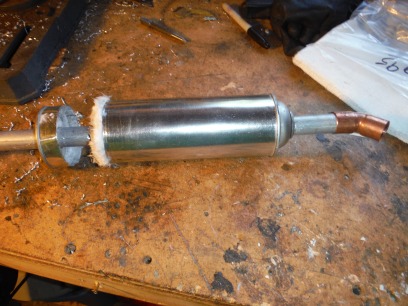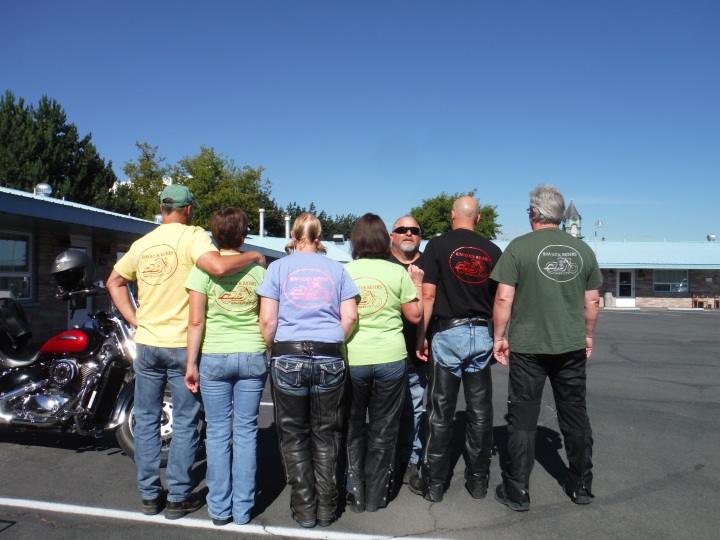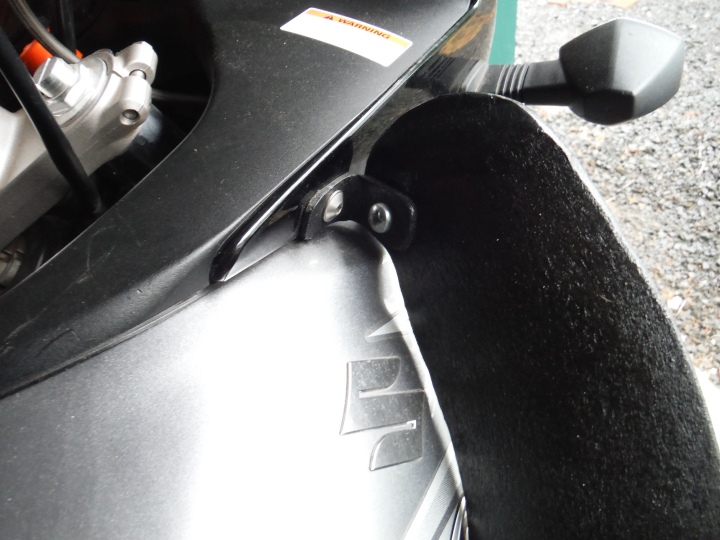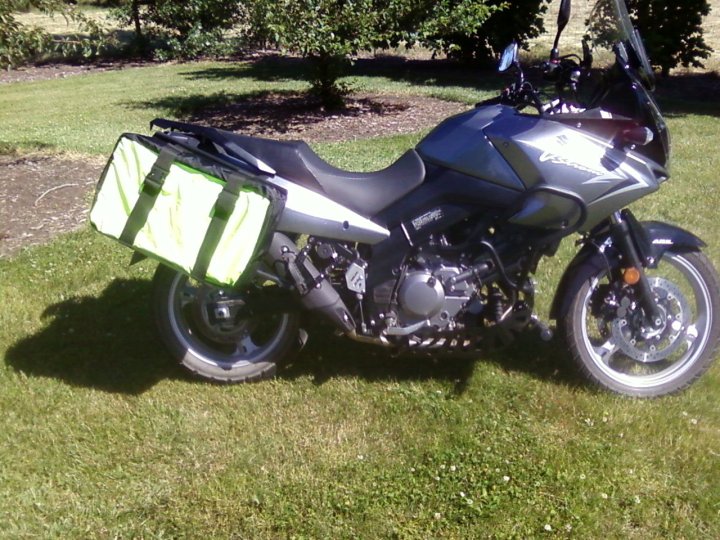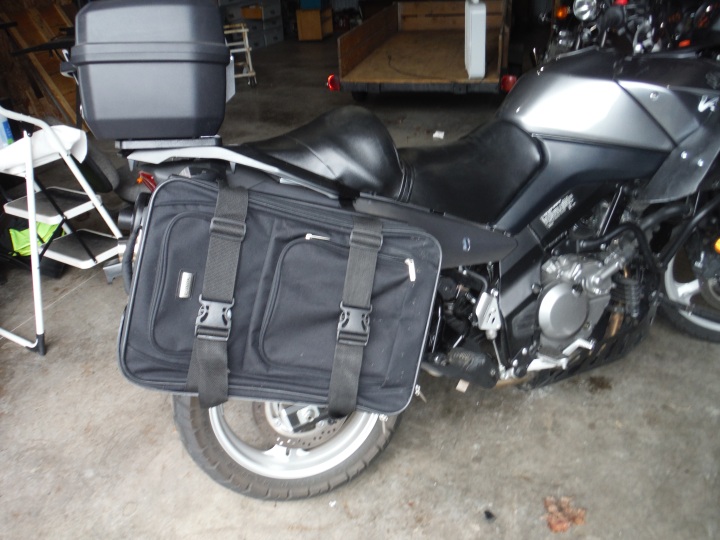This blog isn’t about making an ATV cart. It’s about a trampoline legs, a piece of ½” rebar, two 5/8” pieces of pipe, a plastic barrel, some washers, nuts and bolts, a black rubber bungee strap with one hook missing, two metal brackets, a metal bed frame, a can of primer, a can of red paint, two cotter pins, an used 1×12” pine board, two scraps of 2×2” fir and a rusty piece of 1x3x24” iron.
Our camping spot up in the woods is kind of river front property. River front if you don’t count the 200 yards of green way and the small creek you have to cross on the way to the river. The distance becomes somewhat of a journey if you want to spend the afternoon at the river and you have to carry all your stuff that distance. My oldest daughter, her husband and their friends like to camp at the place and have resorted to strapping as much as they can to their ATV and making a trip or two to the river with said stuff. When I saw what they were up to I thought it would be nice to have a cart to load up and haul their stuff to the river. Being a loving and caring father and probaby even more true, I do like to make things and if you have read any of my blogs, you will know I like to make things out of stuff I already have. Except the two tires, which I bought on Amazon for $11. each, I rounded up all the other items from around the farm and in my shop.
I think it’s called making things from scratch. The fun of making something from scratch is that you only know what your end product will be, but how you get there is a journey.
This journey, the Journey of the Cart, started with a frame made from two bottom supports for the legs of a 12’ trampoline. I love trampoline frames because the pipes are so versatile. There are pre-bent pipes, tapered ends of the pipe will slide into the other ends of pipe and some are both bent and have tapered ends. I started the frame with two bottom leg supports. Both ends of the supports are tapered, so I had to cut two 6” pieces of pipe to slide the two ends into to make a rectangular frame that was about 20” wide and 5’ long.
I had decided that I was going to us a 55 gallon plastic barrel for the bed of the cart and the 20” wide frame would allow the barrel to lay in the frame and not fall through.
I wanted to give the cart a little more ground clearance so I needed to support the axel below the frame. I scrounged around and scratched my head and scrounged around some more. I finally found two heavy brackets that I had salvaged off some farm equipment and sometime in the past. They could be bolted onto the frame with the two holes already in each of the brackets and to better accommodate the axle I notched them, giving me a place to weld the axle solidly in place. 
The barrel, when laid in the frame, sagged through a few inches and sat on and conflicted with the axle. I solved the conflict by bowing the axle down to conform with the barrel before I welded the axle in place. 
The wheel barrel wheels had heavy-duty bearings and the hole for the axel was 5/8”. I didn’t have any 5/8” steel rod, but I did have two short pieces of thick wall pipe that were 5/8” and 12” long. The two pipes welded together was right length. To straighten the pipe I slid a ½” piece of rebar in the middle of the pipes before I welded them together.
The wheels were easy to install with a hole through both ends of the axles, a couple of washers and a pair of cotter pins
My first attempt at a tongue for the cart was made from pipe with a cross support make from the angle iron cut from a metal bed frame, but after I got it bolted together I wasn’t convinced that the pipe would be strong enough when the cart was carrying a heavy load. I remembered that I had come across a piece of a rusty of 1x3x24” channel iron when I was scrounging around the metal pile. It was very strong and the right length so I pulled it out of the pile and swapped out the pipe with the iron piece.
The tongue needed a post on the underside of the front end to slip down into the receiver hitch hole on the ATV, so I welded a large bolt on the tongue that would fit. To keep the post from popping out of the receiver hole, I drilled a hole through the bolt that a pin could be inserted through, act as a stop and to the keep the bolt from popping up and out of the hole every time the ATV hit a bump in the trail. To keep the pin from getting lost I attached it to a short chain and tack welded the chain to the tongue.
A plastic 55 gallon barrel is about 3’ tall and the frame was 5’ long, so that left 2’ of frame unused. I decided that a wood platform for a cooler would be a perfect utilization of the space. I found a piece of 1x12x48” pine board that had been used for a shelf at sometime in the past. It even had a lacquer finish on one side. I cut the board in half and ripped the boards length ways into four 4-3/4” wide boards. I attached the four smaller boards to two 2x2x18” boards. The 2x2s were spaced 18” apart so they would slide down between the cart frame in front of the barrel.
To make it possible to put stuff in the barrel I cut about a third of the side of the barrel away, leaving the two ends full round.
I wanted to make it easy to remove and install the barrel on the cart. To secure the barrel to the frame I put two large pan head bolts through the bottom of the barrel just below the angle iron that secured the back of the tongue to the frame. The two bolts will keep the front from popping out of the frame. To secure the back, I attached a 12” long black heavy duty rubber bungee to the frame with a bolt. One of the hooks on the ends of the bungee was missing so I pushed a bolt through the hook hole and bolted the bungee to the frame. With a hole drilled in the end of the barrel, the bungee can be stretched up and hooked through the hole securing the back of the barrel down..
After I was sure everything was going to work, I wire brushed the frame, cleaned it, primed it and painted it. I was going paint the frame black, but black metal is boring and red is a lot more fun. With the red frame, the white wheels and the blue barrel the cart is quite patriotic.
I will admit that it takes longer to build a cart, or anything for that matter, without a well thought out plan, but for me, as I get older and have a several hundred projects under my belt, it’s much more fun, challenging and rewarding to just start with an idea and a shop full of stuff.
So back to my statement at the beginning; This blog isn’t about a ATV cart. It’s about a trampoline legs, a piece of ½” rebar, two 5/8” pieces of pipe… It’s about taking what you have and making what you want.
Anyway…for what it’s worth.


















